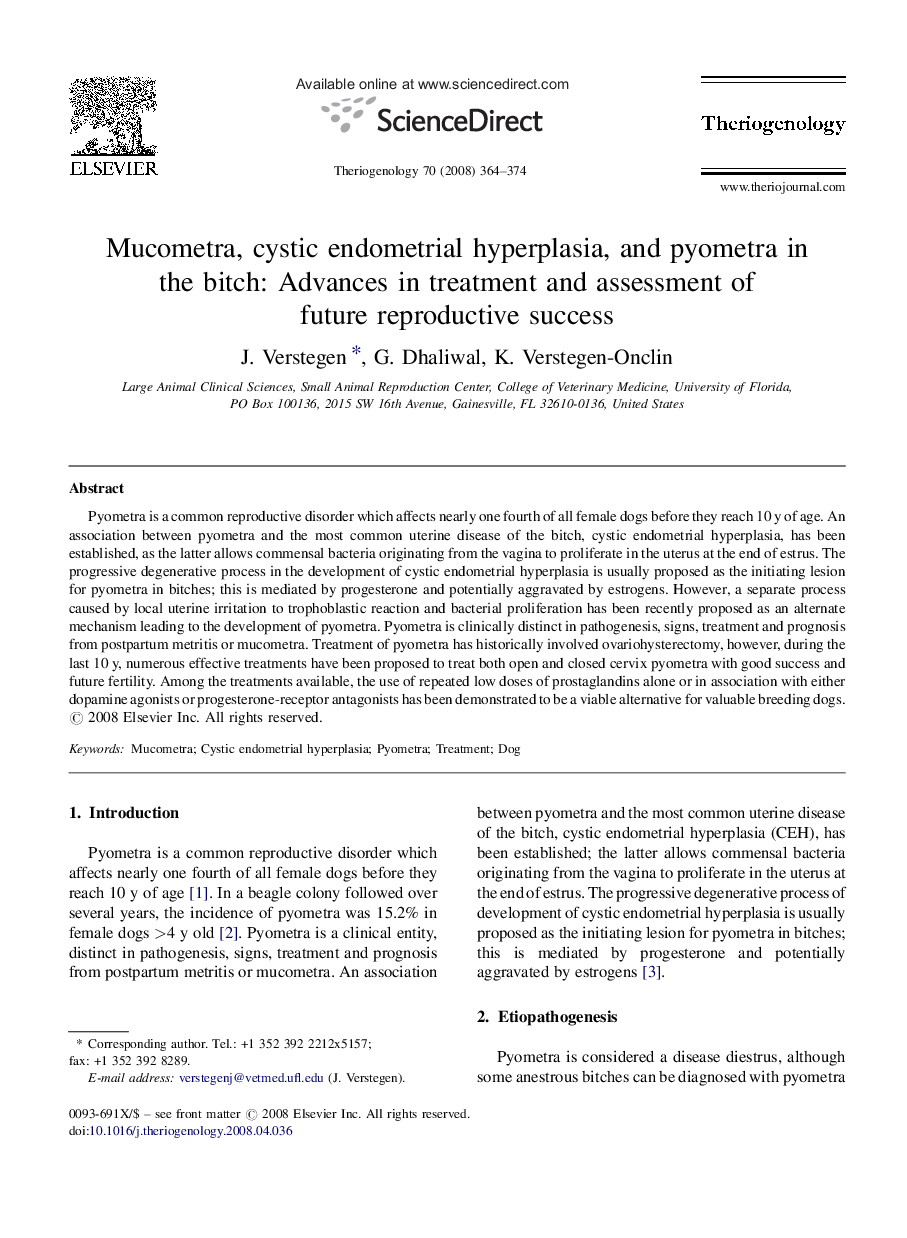| Article ID | Journal | Published Year | Pages | File Type |
|---|---|---|---|---|
| 2095799 | Theriogenology | 2008 | 11 Pages |
Pyometra is a common reproductive disorder which affects nearly one fourth of all female dogs before they reach 10 y of age. An association between pyometra and the most common uterine disease of the bitch, cystic endometrial hyperplasia, has been established, as the latter allows commensal bacteria originating from the vagina to proliferate in the uterus at the end of estrus. The progressive degenerative process in the development of cystic endometrial hyperplasia is usually proposed as the initiating lesion for pyometra in bitches; this is mediated by progesterone and potentially aggravated by estrogens. However, a separate process caused by local uterine irritation to trophoblastic reaction and bacterial proliferation has been recently proposed as an alternate mechanism leading to the development of pyometra. Pyometra is clinically distinct in pathogenesis, signs, treatment and prognosis from postpartum metritis or mucometra. Treatment of pyometra has historically involved ovariohysterectomy, however, during the last 10 y, numerous effective treatments have been proposed to treat both open and closed cervix pyometra with good success and future fertility. Among the treatments available, the use of repeated low doses of prostaglandins alone or in association with either dopamine agonists or progesterone-receptor antagonists has been demonstrated to be a viable alternative for valuable breeding dogs.
